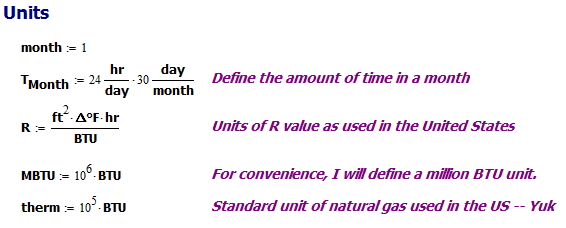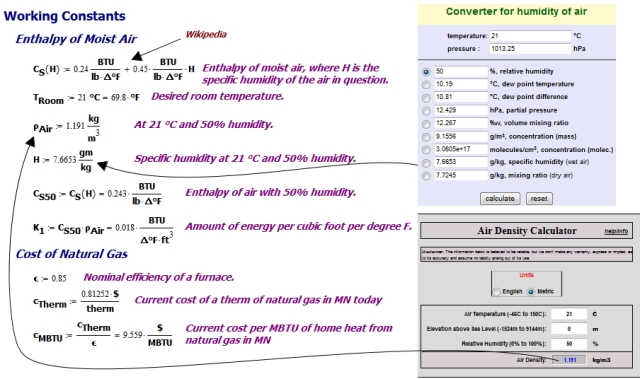Introduction
One of the engineers in my group asked if I could help him understand the tradeoffs between the different kinds of house insulation and their relative economic value. We also spent quite a bit of time talking about where all the heat goes (Figure 1) during the winter. Poor heat efficiency can be really detrimental to the environment. This is why many people are looking to ensure they have a spray foam roof over their home or at least thicker insulation, or even a Gasfitting that avoids this.
To quantify these kinds of discussions, I have found the energy cost calculator at this site useful for making heating system and insulation decisions. As we talked about these calculations, it became clear that it would be useful to work through a simple example in Mathcad to show all the formulas used in estimating a home's energy cost and to make the various unit conversions clear. With overall rising energy costs, homes and businesses are looking for any method of reducing costs possible. Many businesses are deciding to switch energy supplier in order to save hundreds on energy costs. You might want to check out this page if you are looking to switch energy provider and save some money for your home or business.
– in the US, unit conversions are always a big deal. This post summarizes this discussion.
Background
There is a lot of material on the web on predicting home energy use (example), so I will not repeat a physics discussion done better elsewhere.
Here is my approach to duplicating the output from my reference web page:
- I will only be looking at the energy use in January.
I just wanted to use a month where I was assured we would be heating every day – January was as good as any other mid-winter month.
- For my example, I will use a simple home with four walls and a ceiling.
Since my intent here is to illustrate how the calculation is done, creating a more complex house is not necessary. I also should point out that this type of analysis is approximate – I would not expect great accuracy. At best, the analysis will provide me an reasonably accurate relative performance comparison.
- I assumed air with a 50% humidity level.
This is too high for winter here, but it seemed to give me the same answers as the web page I was using as my reference.
- I am going to ignore things like
- loss through the slab.
- heat generated by occupants.
- door losses.
Beginning with a simple model meets checking my results easier and these constraints/limitations are not significant with respect to my verification of the heating cost model.
Analysis
Unit Definitions
Figure 1 shows some units that I defined for this analysis. Note that the definition of R is different in the US than other countries because of the unit differences.
Determination of Constants
Figure 2 shows the constants that were used in this analysis and where they come from. I used a couple of web-based calculators to assist me. The image has embedded links that will allow you to access the calculators and the Wikipedia reference by clicking on them.
Home Characteristics
Figure 3 shows the characteristics of an example house that I used to illustrate how the web-based calculator worked. My Mathcad model and the calculator both gave the same results.
Costs and Graphical Results
Figure 4 shows how I determined the heating cost for a typical January in Minnesota. I used January-2014 as my temperature reference.
Conclusion
I was able to generate a Mathcad model that I plan to extend for investigating other insulation and heating options for a cabin I will be building next year in northern Minnesota – a place where insulation and heating are extremely important.






Amazing post and calculation! Thanks so much!
Pingback: What R-Value Is Good Enough? | Math Encounters Blog